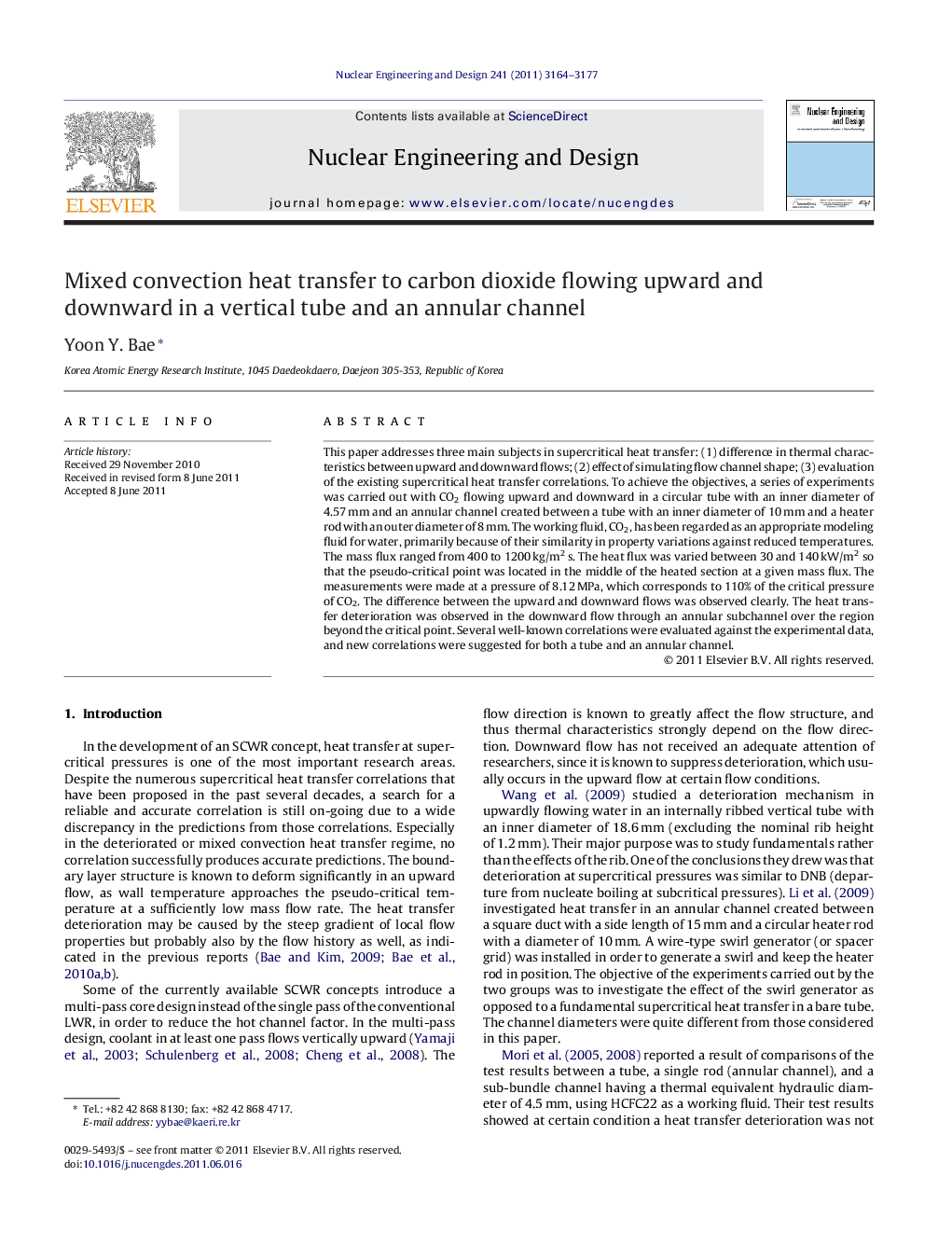| کد مقاله | کد نشریه | سال انتشار | مقاله انگلیسی | نسخه تمام متن |
|---|---|---|---|---|
| 297436 | 511756 | 2011 | 14 صفحه PDF | دانلود رایگان |

This paper addresses three main subjects in supercritical heat transfer: (1) difference in thermal characteristics between upward and downward flows; (2) effect of simulating flow channel shape; (3) evaluation of the existing supercritical heat transfer correlations. To achieve the objectives, a series of experiments was carried out with CO2 flowing upward and downward in a circular tube with an inner diameter of 4.57 mm and an annular channel created between a tube with an inner diameter of 10 mm and a heater rod with an outer diameter of 8 mm. The working fluid, CO2, has been regarded as an appropriate modeling fluid for water, primarily because of their similarity in property variations against reduced temperatures. The mass flux ranged from 400 to 1200 kg/m2 s. The heat flux was varied between 30 and 140 kW/m2 so that the pseudo-critical point was located in the middle of the heated section at a given mass flux. The measurements were made at a pressure of 8.12 MPa, which corresponds to 110% of the critical pressure of CO2. The difference between the upward and downward flows was observed clearly. The heat transfer deterioration was observed in the downward flow through an annular subchannel over the region beyond the critical point. Several well-known correlations were evaluated against the experimental data, and new correlations were suggested for both a tube and an annular channel.
► Experimental results of heat transfer at a supercritical pressure for a tube with an inner diameter of 4.57 mm and a corresponding annular channel (8 mm × 10 mm, 1 mm gap) were compared each other.
► Effect of various parameters such as pressure, flow direction, diameter, channel shape, was investigated.
► Existing correlation for supercritical heat transfer were evaluated against the experimental data.
► Some unusual characteristics of supercritical heat transfer, such as overshoot and non-monotonic behavior against buoyancy parameter, were discussed.
► New correlations were proposed based on the experimental data.
Journal: Nuclear Engineering and Design - Volume 241, Issue 8, August 2011, Pages 3164–3177